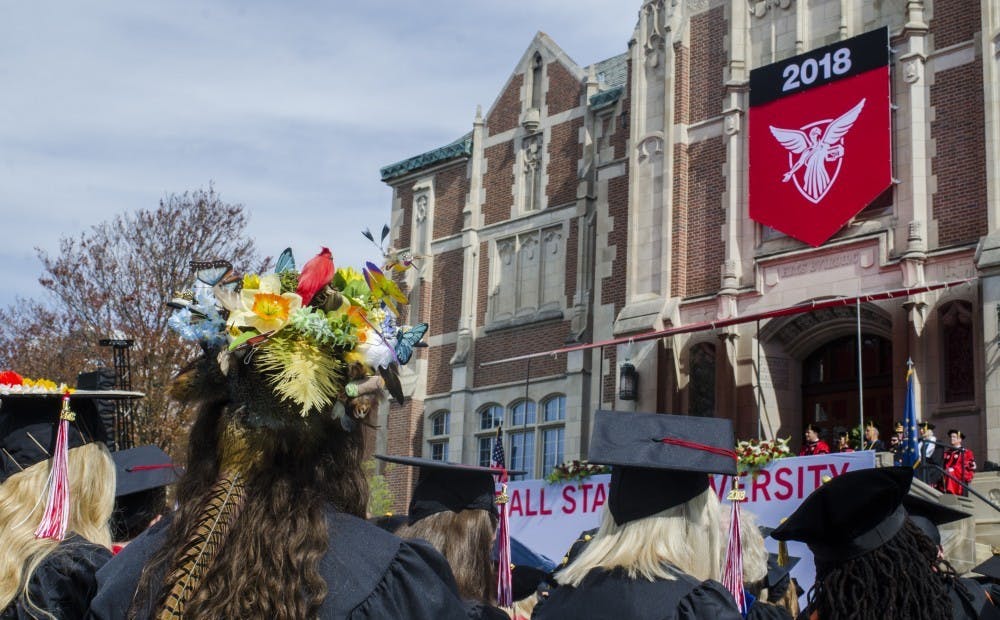Editor's note: In honor of the university's centennial year, The Daily News is counting down 100 days to the university's celebration Sept. 6 with 100 of Ball State's most famous traditions and figures. Check back each day to read about Cardinal history.
Since 1940, Ball State has held commencement ceremonies at the Arts Terrace outside the David Owsley Museum, according to the 1940 commencement program.
While there are also ceremonies held by each college for its graduates, the Arts Terrace hosts the main ceremony where graduates of all colleges gather along with their families, friends and other Ball State faculty members.
During the main ceremony, the graduates are recognized along with honorary degree recipients and a speaker is often invited to address the crowd.
Graduates can be seen wearing a black cap and gown and a variety of symbols to honor accomplishments such as a bronze medallion for cum laude students, a silver medallion for magna cum laude students and a gold medallion for summa cum laude students.
This year’s commencement ceremony will be different from any other as the university celebrates its centennial year. Among the special accommodations to celebrate this historic year, Ball State is giving graduates a special “Commemorative Centennial Stole” to wear alongside their other honors, according to Ball State’s website.
Today, it is common for students to personalize the top of their caps, and the type of tassel hanging from it indicates what degree they earned. Students graduating with an associates degree wear a “cardinal” red colored tassel and a “cardinal and white” tassel is given to bachelor’s degree recipients.
Over the years, speakers at the ceremony have ranged from politicians like Richard Lugar to prominent figures in business like James M. Buchanan and Angela Ahrendts, according to the Ball State University Libraries Archives and Special Collections of Ball State Spring Commencement Speakers and Programs.
Not all guests around commencement time have always been invited, however. In the June 6, 1922, issue of The Easterner, an article reported multiple sightings of a “Woman in Black” visiting campus right before commencement over a period of six years.
The article described a series of sightings of the woman, including one by a professor who was walking on campus around 2 a.m.

This article, published in the June 6, 1922, issue of The Easterner, reports multiple sightings of a “Woman in Black” visiting campus right before commencement.
“When directly in front of the building he says he sensed a vague presence, experiencing a peculiar sensation of coldness along the spine, and looking up he beheld a figure in black coming down the sidewalk from the main building,” The article said. “All he could discern was that the figure was clothed in black, the cloak nearly touching the ground. He did not move and the figure came closer and closer. When nearly half way down the walk the black figure turned and walked back to the main steps.
"The professor thinks the person was muttering or mumbling something to herself. This backward and forward movement continued five times and may have gone on indefinitely had not the professor coughed. At the sound of this the black clad person broke into a run and disappeared around the corner of the building.”
An investigation was conducted, however the article reported that the woman was thought to be “a practical joker trying to frighten some of the students.”
Read more centennial content here.
Contact Brooke Kemp with comments at bmkemp@bsu.edu or on Twitter @brookemkemp.




